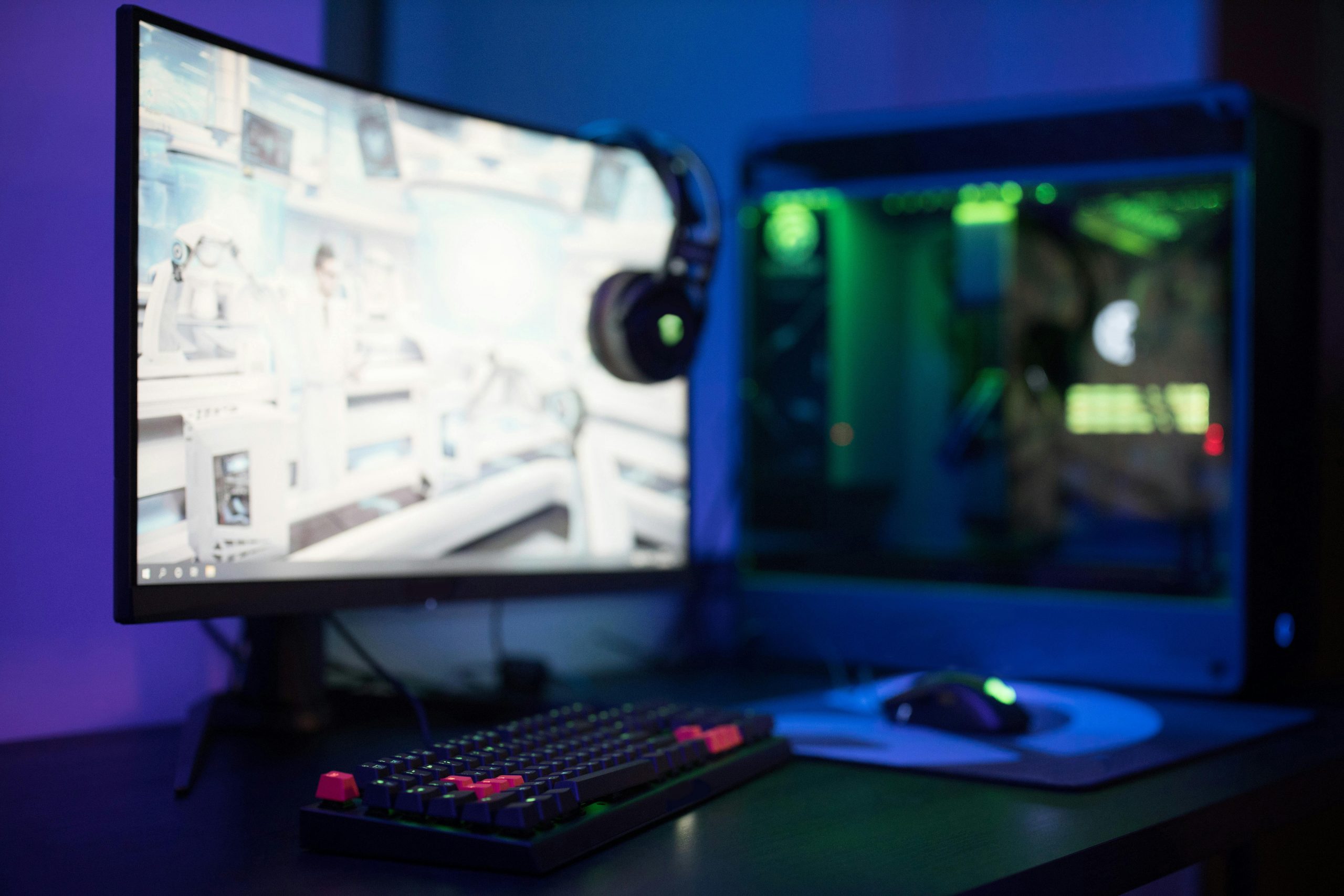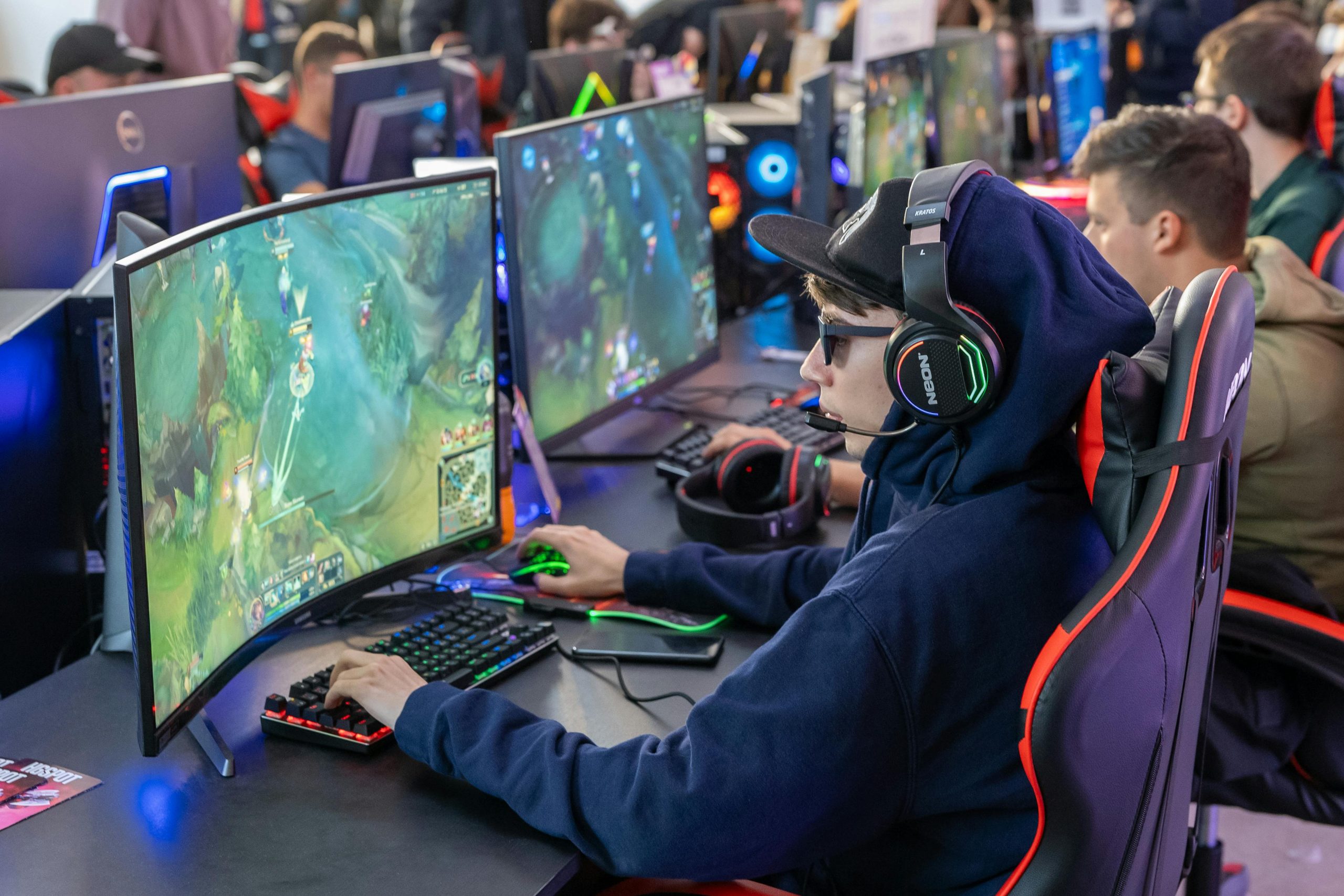If you’re a gamer looking to upgrade your setup, you’ve probably come across curved monitors. They look sleek and futuristic—but are curved monitors good for gaming? The short answer: yes, for many gamers, especially those who value immersion and visual depth. But like any piece of tech, they have pros and cons.
This guide breaks down everything you need to know about curved monitors for gaming, including how they compare to flat screens, what types of games benefit the most, and whether they’re worth the investment.
What Makes a Monitor “Curved”?

Before we dive into gaming performance, let’s look at what makes a monitor curved. Unlike flat monitors, a curved screen has a slight bend that wraps toward the user. This design aims to mimic the natural curve of your eye’s field of view.
Curvature is usually measured in “R” units (radius):
- 1800R: More curved, better for immersive single-player gaming
- 3000R or higher: More subtle curve, closer to flat
The lower the “R” number, the deeper the curve.
Benefits of Curved Monitors for Gaming
- Immersive Experience
This is the top reason gamers choose curved monitors. The screen wraps around your vision, making you feel more “inside” the game. This is especially noticeable in:
- First-person shooters (FPS)
- Racing games
- Open-world RPGs
- Flight simulators
Games that rely on scenery, atmosphere, or perspective get a major boost in realism.
- Wider Field of View
Curved ultra-wide monitors (like 34” or 49” models) give you more horizontal space. This means:
- More game elements are visible without scrolling or turning
- You can see enemies or items in your peripheral vision
- It creates a panoramic effect that flat monitors can’t match
This extra field of view gives players a competitive edge, especially in tactical or strategy games.
- Less Eye Strain
Flat monitors force your eyes to constantly adjust between the center and the sides. A curved monitor brings the edges closer to your natural line of sight, reducing eye movement. This leads to:
- Less visual fatigue
- Easier long gaming sessions
- More comfortable screen tracking
Over time, this can help reduce headaches or tired eyes during marathon gaming sessions.
- Reduced Glare (in the Right Setup)
Because of their shape, curved monitors deflect light away from your eyes. This means:
- Fewer reflections from windows or lights
- Improved visibility in bright rooms
- A more focused gaming experience
However, this only works well if your lighting is set up properly.
Are Curved Monitors Better Than Flat for Gaming?

You might be asking: Are curved monitors better than flat ones? The answer depends on how you game.
Curved monitors are better for:
- Solo gamers who sit directly in front of their screen
- Players who love immersive or story-driven games
- Gamers with enough desk space to accommodate the screen
Flat monitors are better for:
- Competitive multiplayer gamers who prioritize speed and precision
- Shared setups or group gaming sessions
- Budget-conscious users
So, are curved monitors better? They can be—especially for immersive play—but they’re not always necessary. It depends on your space, style, and screen size.
Best Types of Games for Curved Monitors
- First-Person Shooters (FPS)
The curve improves your peripheral vision, helping you spot enemies faster. It’s especially useful in wide, open maps.
- Racing Games
Curved screens create a cockpit-like feel, pulling you into the action. Paired with a steering wheel setup, it’s close to real driving.
- Open-World and RPG Games
Games like Skyrim, The Witcher, and Horizon benefit from the immersive visuals. The sweeping landscapes feel grander and more alive.
- Flight Simulators
Curved ultrawides are ideal for simulators. They give a panoramic cockpit view, making takeoffs and landings more realistic.
- Real-Time Strategy (RTS)
More screen space means better map coverage, unit control, and easier multi-tasking—especially in games like StarCraft or Age of Empires.
Drawbacks of Curved Monitors for Gaming
Even with their advantages, curved monitors aren’t perfect for every gamer.
- Higher Cost
Expect to pay more. Curved screens, especially ultrawide or high-refresh-rate models, can be expensive.
- Not Ideal for All Games
2D games, retro-style games, or anything with flat visuals won’t gain much from the curved display. Some UI elements may look stretched.
- Needs the Right Viewing Position
To enjoy the full effect, you need to sit directly in the center. Off-center angles reduce the immersive quality and may cause distortion.
- Takes Up More Space
Larger curved monitors have a deeper footprint, so make sure your desk can support it. Wall-mounting can also be more complicated.
- Limited Benefits on Small Screens
The immersive curve works best on screens 27 inches or larger. On smaller monitors, the curve isn’t as noticeable and might feel unnecessary.
Features to Look For in a Curved Gaming Monitor
If you decide to go curved, here are some features to prioritize:
- Screen size: 27” or larger for noticeable curvature
- Resolution: 1440p (QHD) or 4K for sharper detail
- Refresh rate: At least 144Hz for smoother motion
- Response time: 1ms to 5ms for fast-paced games
- Panel type: IPS panels for better color, VA for deeper blacks
- G-Sync or FreeSync: Reduces screen tearing and lag
Also consider screen ratio. A 21:9 (ultrawide) ratio is great for multitasking and immersive gameplay but may not be supported by all games.
Curved Monitor Setup Tips for Gaming
To get the best out of your curved screen, follow these setup tips:
- Sit at the center: This is the “sweet spot” for immersive viewing
- Adjust tilt and height: Keep your eyes aligned with the screen’s midpoint
- Use ambient lighting: Avoid bright lights directly behind you
- Calibrate colors: Use your monitor’s settings or online tools to improve brightness and contrast
A good setup makes all the difference, especially when gaming for hours.
Are Curved Monitors Good for Console Gaming?
Curved monitors are mostly designed for PC gamers. If you’re using a console like a PS5 or Xbox Series X, you’ll need to check:
- HDMI ports (make sure it supports HDMI 2.0 or higher)
- Resolution and refresh rate compatibility
- Aspect ratio support (some consoles don’t support ultrawide well)
If your console setup is on a desk and you’re sitting close, a curved monitor can still offer better visuals. But for couch gaming or TV use, a flat screen might be easier to manage.
Final Verdict: Should You Get a Curved Monitor for Gaming?
So, are curved monitors good for gaming? In many cases, yes. They offer an immersive, eye-friendly experience that’s hard to beat—especially in single-player or simulation-heavy games.
However, they’re not for everyone. If you’re short on space, play lots of competitive esports, or stick to casual gaming, a flat monitor might work just fine.
Bottom line: If immersion and screen space are your priorities, a curved monitor could level up your gaming experience.
Related Questions
Q: Are curved monitors better than flat ones for work and gaming?
A: For gaming, curved monitors offer more immersion. For work, they help with multitasking but may distort certain content.
Q: What screen size is best for a curved gaming monitor?
A: 27 inches or larger is best for the curve to make a real difference.
Q: Do curved monitors cause motion sickness?
A: Rarely. Most people adjust quickly, but some may feel discomfort if seated off-center.